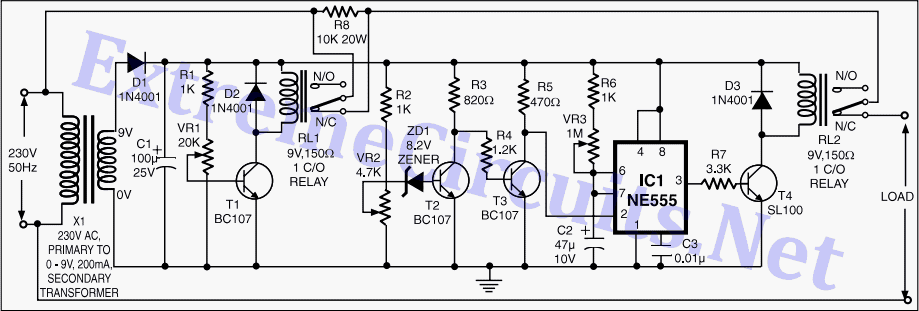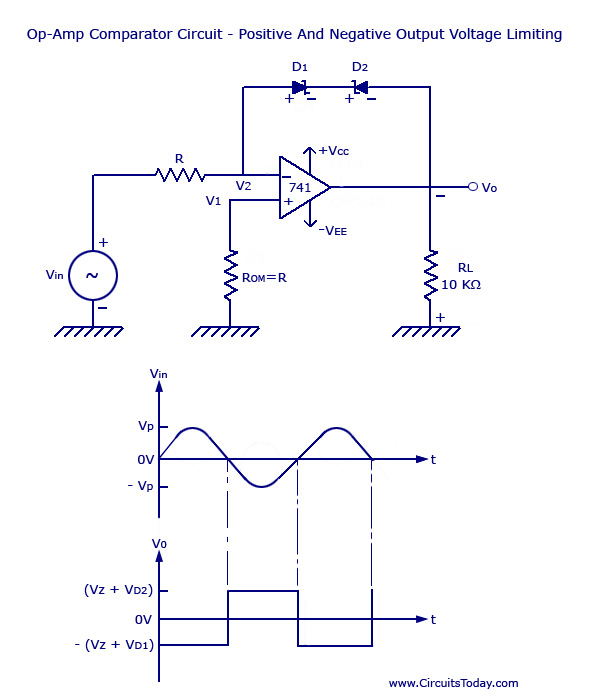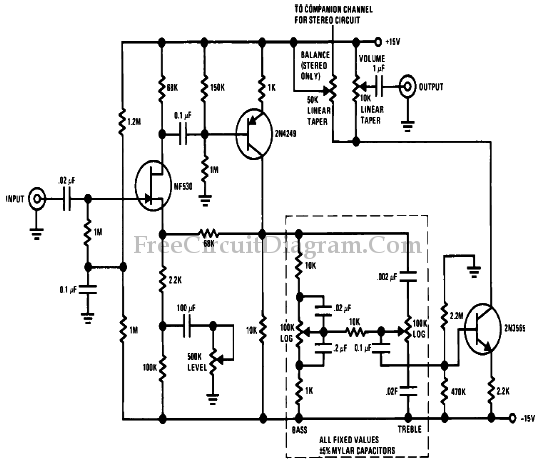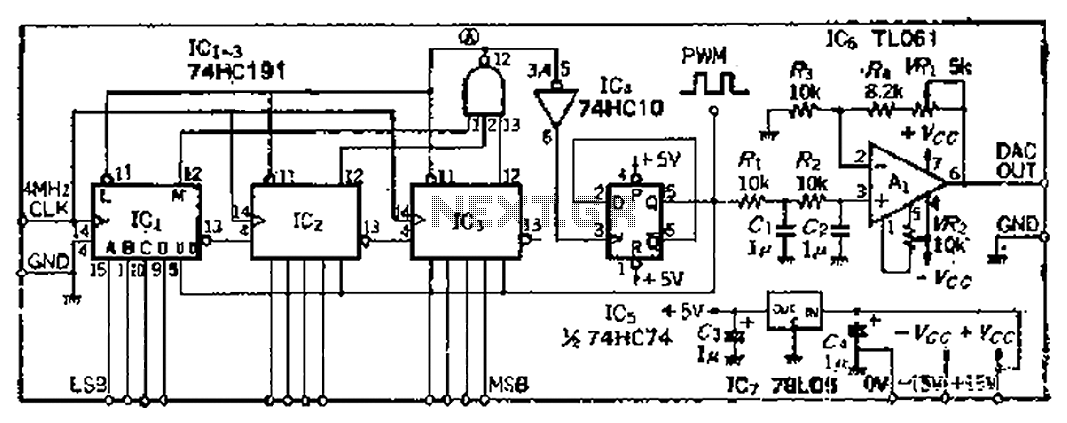
High Low Voltage Cutout Without Timer

This cost-effective circuit can be connected to an air conditioner, refrigerator, or any other advanced electrical appliance for protection.
This circuit serves as a protective device for sensitive electrical appliances such as air conditioners and refrigerators. It is designed to prevent damage caused by voltage fluctuations, overloads, and short circuits. The circuit typically incorporates essential components such as fuses, relays, and voltage regulators to ensure reliable operation.
The primary function of the circuit is to monitor the electrical parameters of the appliance. When the circuit detects an abnormal condition, such as an overcurrent or a voltage spike, it will automatically disconnect the appliance from the power supply to prevent potential damage. The use of a fuse provides an additional layer of safety, as it will blow if the current exceeds a specified limit, thereby interrupting the circuit.
Incorporating a relay allows for the automation of the disconnection process. When a fault condition is detected, the relay is activated, opening the circuit and cutting off power to the appliance. This mechanism can be reset either manually or automatically, depending on the design.
To enhance the circuit's functionality, a voltage regulator can be included to maintain a stable output voltage, protecting the appliance from voltage fluctuations that could lead to malfunction or damage. Additionally, the circuit may feature LED indicators to provide visual feedback on the operational status, allowing users to quickly ascertain whether the appliance is functioning correctly or if a fault has occurred.
Overall, this protective circuit is a crucial component for ensuring the longevity and reliability of electrical appliances, especially in environments where power quality may be inconsistent. Its simplicity and cost-effectiveness make it an ideal solution for both residential and commercial applications.This inexpensive circuit can be connected to an air-conditioner/fridge or to any other sophisticated electrical appliance for its protection. Generally, c.. 🔗 External reference
This circuit serves as a protective device for sensitive electrical appliances such as air conditioners and refrigerators. It is designed to prevent damage caused by voltage fluctuations, overloads, and short circuits. The circuit typically incorporates essential components such as fuses, relays, and voltage regulators to ensure reliable operation.
The primary function of the circuit is to monitor the electrical parameters of the appliance. When the circuit detects an abnormal condition, such as an overcurrent or a voltage spike, it will automatically disconnect the appliance from the power supply to prevent potential damage. The use of a fuse provides an additional layer of safety, as it will blow if the current exceeds a specified limit, thereby interrupting the circuit.
Incorporating a relay allows for the automation of the disconnection process. When a fault condition is detected, the relay is activated, opening the circuit and cutting off power to the appliance. This mechanism can be reset either manually or automatically, depending on the design.
To enhance the circuit's functionality, a voltage regulator can be included to maintain a stable output voltage, protecting the appliance from voltage fluctuations that could lead to malfunction or damage. Additionally, the circuit may feature LED indicators to provide visual feedback on the operational status, allowing users to quickly ascertain whether the appliance is functioning correctly or if a fault has occurred.
Overall, this protective circuit is a crucial component for ensuring the longevity and reliability of electrical appliances, especially in environments where power quality may be inconsistent. Its simplicity and cost-effectiveness make it an ideal solution for both residential and commercial applications.This inexpensive circuit can be connected to an air-conditioner/fridge or to any other sophisticated electrical appliance for its protection. Generally, c.. 🔗 External reference





